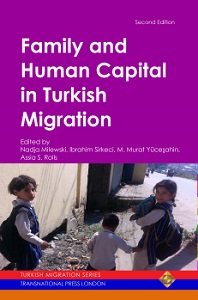How highly skilled labour migrants deal with flexibility?
How highly skilled labour migrants deal with flexibility?
Author(s): Ulaş Sunata
Subject(s): Geography, Regional studies, Labor relations, Post-War period (1950 - 1989), Transformation Period (1990 - 2010), Present Times (2010 - today), Migration Studies, Human Resources in Economy
Published by: Transnational Press London
Keywords: Turkey; Germany; migrations; employment; labor relations; highly skilled labor migrants; flexibility;
Summary/Abstract: During the last three decades, the phenomenon of flexibility has attracted a great deal of attention in sociology, not only in relation to work flexibility but also flexibility of migration. In this respect, the structural changes in both employment relationships and migratory conditions have brought about new lifestyles. The theoretical debates in the field of migration studies and human capital have often concentrated on the (changing) roles of nation-states, transnational corporations, and recruitment agencies at the macro level. Sassen (1988; 1998) observed two critical social classes and their spatial polarization in transnational migration. People from low income groups are employed in low-skilled service jobs. In contrast, there are newly emerging high income segments employed in professions. This latter group are also the “young urban professionals” (yuppies) who tend to be portrayed as enjoying affluent lifestyles (Robinson, 2009).
Book: Family and Human Capital in Turkish Migration
- Page Range: 125-135
- Page Count: 11
- Publication Year: 2015
- Language: English
- Content File-PDF

